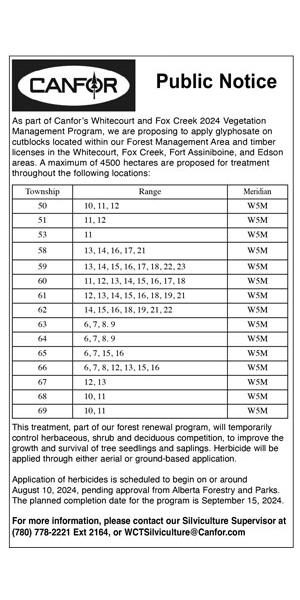Free, family-friendly resource on gluten and celiac disease grounded in extensive evidence yet easy to understand and use
When Lisa Rigney’s daughter was diagnosed with celiac disease six years ago, one word sprang to mind.
“Overwhelmed,” Rigney recalls. “It was a very, very overwhelming experience.”
A disorder that causes the body to overreact to gluten in food such as barley, rye and wheat, celiac disease damages the lining of the intestines, preventing proper absorption of nutrients crucial to good health.
With no prior family history of the disease, Rigney knew almost nothing about it yet had to make immediate fundamental changes to her child’s diet.
“I knew celiac disease was related to being gluten-free, but that was the extent of my knowledge.”
 Gluten-free falafel balls |
| Related Stories |
| The high cost of living a gluten-free lifestyle
|
| New cookbook boosts protein diet to help people beat cancer
|
| How to eat healthy without blowing your food budget
|
Trips to the grocery store, a job she’d always done “with my eyes closed,” now became a careful exercise in reading package labels.
And even after shifting her daughter to gluten-free foods, Rigney still had nagging questions about whether the meals had enough essential fibre and nutrients.
“In the early days of the diet, she was lethargic, so it was a case of, is she getting what she needs?”
With so many details to learn about, the whole experience “was a steep learning curve,” Rigney remembers.
That journey will now be a little easier for families like the Rigneys, thanks to a new gluten-free food guide created specifically for children and youths by University of Alberta nutrition researcher Diana Mager, pediatrics professor Justine Turner and their colleagues.
The guide broadly addresses the nutritional needs of children with celiac disease, including limitations in the gluten-free diet that could affect those needs, says Mager, a registered dietitian and professor in the Faculty of Agricultural, Life & Environmental Sciences and the Faculty of Medicine & Dentistry.
“We wanted to develop a comprehensive resource for families on how to start building a gluten-free diet, to take off some of the burden of worrying about whether their child is eating healthy.”
The 40-page document, available for free online, helps answer some of the many questions families have when a child is diagnosed with celiac disease.
“There are so many changes to make, with cooking, recipes, food shopping and questions about ongoing development and growth of children, so we wanted to provide a nutrition-based tool that provides ongoing resources in collaboration with dietitian support,” Mager says.
Meeting the nutritional needs of children with celiac disease is especially important, she notes.
“It’s a pivotal period of growth and development. In particular, children who remain undiagnosed into adulthood often experience poor bone health at very early ages, which places them at long-term risk for bone fracture.”
And while a gluten-free diet is the foundation of treating celiac disease, it also has some nutritional limitations, including high fat or sugar content in processed gluten-free foods, and low levels of folate, a vitamin important to healthy cell growth and function.
Grounded in research, the guide is a science-based resource for families, who often resort to online searches for nutrition information, Mager says.
“There are a lot of nutrition myths about the gluten-free diet on the internet. If, for example, the advice is to eliminate wheat from the child’s diet, that doesn’t address the problem, because there are other grains with gluten.
“It was important for us to develop a tool that could provide consumers with evidence-based guidelines.”
Having the guide would have made “a big difference” in learning how to plan a healthy diet for her daughter years ago, says Rigney, a program co-ordinator for the Edmonton chapter of Celiac Canada, which helped develop the guide.
“It includes little things like pairing foods to make nutrient absorption better. That’s something healthcare professionals would know about, but not necessarily the general population.”
Taking a multi-pronged approach over the past five years, the research team surveyed parents of children with celiac disease, doctors, nurses and dietitians across Canada on what they wanted to see in a food guide for youths.
The researchers also studied the dietary patterns of Canadian children and youths with celiac disease and reviewed similar data from other countries. They then developed more than 1,000 simulated gluten-free menus that are nutritionally complete for youths aged four to 18.
“From that, we developed a plate model of several food choices for what children and youth would need to consume in a day to promote healthy eating.”
They recommend filling just over half the plate with fruit and vegetables and eating gluten-free grains such as pasta or rice and proteins such as seeds, nuts, fish, eggs and other animal proteins. The serving plan also includes a serving of unsweetened milk or a fortified plant-based beverage.
The guide’s content and layout were also evaluated by focus groups of children, their families and healthcare professionals to make sure it was simple to read, especially for youngsters, Mager says.
At a glance, colourful photos show the many gluten-free healthy food choices available.
“We wanted it to be user-friendly so a six-year-old could identify different foods. There are many challenges, like social events, in a child’s life for non-adherence to a gluten-free diet. Kids want to fit in with their peers, so they want to know what they can eat, not what they can’t have.”
Topics covered in the guide include a comprehensive outline of gluten-free diet essentials such as iron, fibre, pulses, healthy fats and natural sugars, which was important to teens involved in sports.
“They wanted to know what are the better food choices for dealing with issues such as bone health.”
There’s also a list of which grains are and aren’t gluten-free, and how to cook and store gluten-free foods. Recipes are included, along with vegetarian, vegan and lactose-intolerant diets.
The guide shows how to read nutrition labels and ingredient lists on gluten-free processed foods. It also offers tips on grocery shopping, eating on a budget, dining out and preparing healthy school lunches and snacks.
“People wanted to have material their kids could relate to, so if teens were buying their own food, they would know how to stick to a gluten-free diet.
“It also helps parents come up with new ideas to make gluten-free meals tasty, fun, and not the same things over and over again.”
The guide, which Rigney keeps in her kitchen, is an “invaluable” resource, she says. “Because all of the information is in one place, you can refer to it and re-educate yourself time and time again.”
| By Bev Betkowski
This article was submitted by the University of Alberta’s Folio online magazine, a Troy Media Editorial Content Provider Partner.
The opinions expressed by our columnists and contributors are theirs alone and do not inherently or expressly reflect the views of our publication.
© Troy Media
Troy Media is an editorial content provider to media outlets and its own hosted community news outlets across Canada.


